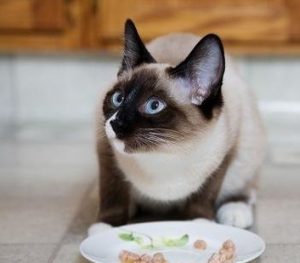Dogs usually eat two meals a day, but is this also suitable for cats? In fact, cats’ nutritional needs vary with age, so their feeding frequency differs.
Feeding Frequency for Kittens
-
2 – 4 months old: Feed 4 – 5 times a day. At this age, kittens have small stomachs and high nutritional demands. Frequent feeding ensures they get enough nutrients to support rapid growth and development.
-
4 – 8 months old: Reduce to 3 – 4 times a day. Kittens are still growing quickly, and multiple meals help maintain energy levels and steady growth.
-
Around 1 year old: Feed 3 times a day. By this age, cats are approaching adulthood, and their growth rate slows. However, they still benefit from multiple meals to prevent overeating and ensure balanced nutrition.
Feeding Frequency for Senior Cats
Senior cats, like kittens, benefit from multiple small meals. Feed them 3 times a day. Their metabolism slows with age, and smaller meals are easier on their digestive system and help maintain a healthy weight.
Feeding Frequency for Adult Cats
Healthy adult cats can be fed 1 – 2 times a day. Once or twice – daily feeding helps prevent digestive issues and overeating. If your adult cat has gastrointestinal problems, switch to multiple small meals to ease its digestive burden.
General Feeding Tips
-
Portion Control: Regardless of age, avoid overfeeding or underfeeding. Each meal should be enough to satisfy your cat. For adult cats, feed until they’re 80% full. Their abdomen should feel neither bloated nor empty when gently touched.
-
Consistent Schedules: Feed your cat at the same times daily to maintain its biological clock and digestive regularity.
-
Nutritious and Balanced Diet: Choose high – quality cat food that meets your cat’s nutritional needs. Include animal protein – rich foods like meat and fish. Add some vegetables and fruits to provide fiber and vitamins, but ensure they’re cat – safe.
-
Monitor and Adjust: Watch your cat’s weight, appetite, and overall health. Adjust feeding amounts and frequency based on activity level, health status, and physiological changes.
By understanding your cat’s nutritional needs and feeding it scientifically, you can help ensure its healthy growth and longevity.

